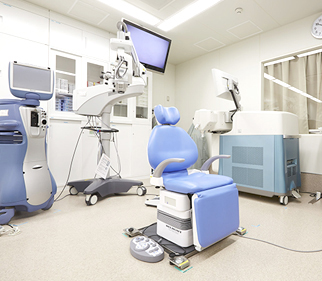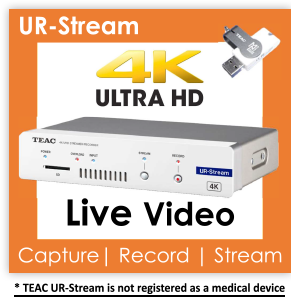Case Studies

About Suidobashi Hospital
The Hospital was founded in 1890. When relocated in 2013, it was opened as an urban hospital utilizing cutting-edge equipment. The Department of Ophthalmology was established in 2000, constantly being upgraded with state-of-the-art diagnostic devices and surgical instruments. Even in Japan, this department is considered as one of the very few places providing advanced medical care in eye surgeries such as cataract surgery and corneal refractive surgery (LASIK). Professor Hiroko Bissen-Miyajima gives dozens of lectures a year in Japan as well as many countries, including Germany and USA.
She also serves as President of the Japanese Society of Cataract and Refractive Surgery (JSCRS).
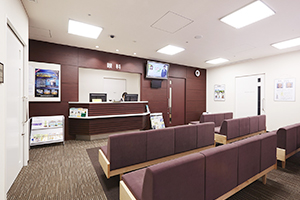
Solutions: How did you come to know of TEAC?
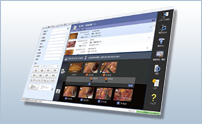
Content Management System
SURGE ONE
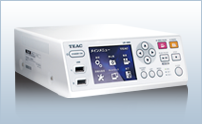
HD Surgical Video Recorder
UR-4MD >
We were already using three video recorders to record images captured by imaging devices during a cataract surgery and corneal refractive surgery (LASIK). One of the recorders in use was made by TEAC.
At conferences, we spoke with other doctors and found TEAC's Content Management System, SURGE ONE.
What was your problem before SURGE ONE?
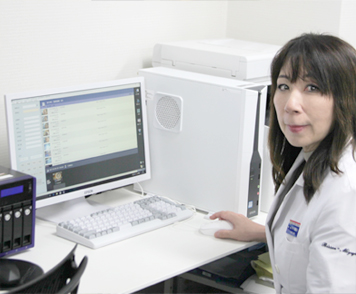
We were using video recorders, and images were stored on DVD/ Blu-ray discs and managed in a primitive way; the surgery date was hand-written directly on the disc for putting on the shelf.
Most of the images recorded were of HD resolution, which required bigger data storage capacity and therefore a large number of discs. This created a lot of work for the nurses and orthoptists. For special cases or to share an operation with other doctors, we had to check each disc and find the right recording for a particular surgery. The consumer-grade DVD recorder in use recorded images on its built-in hard disk drive and then copied to discs (so, it was not real-time recording), taking up time when discs were changed.
Furthermore, if we wanted to edit a video stored on a Blu-ray disc, we first had to transfer the data to a PC, but reading data from Blu-ray discs was slow. This became a problem when work had to be done very quickly.
Why did you choose SURGE ONE?
SURGE ONE and UR-4MD enable simultaneous recordings of images captured from multiple imaging devices, and allow us to centrally manage videos. Today, in our hospital, we use five imaging devices at the same time.
SURGE ONE is the only system which can manage and record videos from all five imaging devices. Also, SURGE ONE is designed to be user-friendly and easy to understand. The purchase price was also an important factor, and SURGE ONE was found to be very reasonably priced, especially for the capabilities.
Use Case today
We perform about 20 cataract and corneal refractive surgeries (LASIK) everyday. For cataract surgeries, typically only surgical microscopes are used. But, in our case, we operate three devices together:
(1) Femtosecond Laser System for cataract, (2) Phacoemulsifier Device, (3) Surgical Microscope
Images from these devices are recorded using two UR-4MD, and then transferred to the SURGE ONE Server.
For corneal refractive surgeries, a switcher is used to switch the video source between Femtosecond Laser and Excimer Laser System during recording by other UR-4MD. We then transfer the images to SURGE ONE in the medical office. A surgery takes about 10 minutes to complete, and 5 minutes of this is recorded.
Before recording, a nurse or orthoptist uses a card reader to read the patient's ID card, which enables easy management. Later, if a certain part of a surgical video is needed, for the academic conference, we can
easily search by the patient information and then use SURGE ONE to extract only the desired portion.
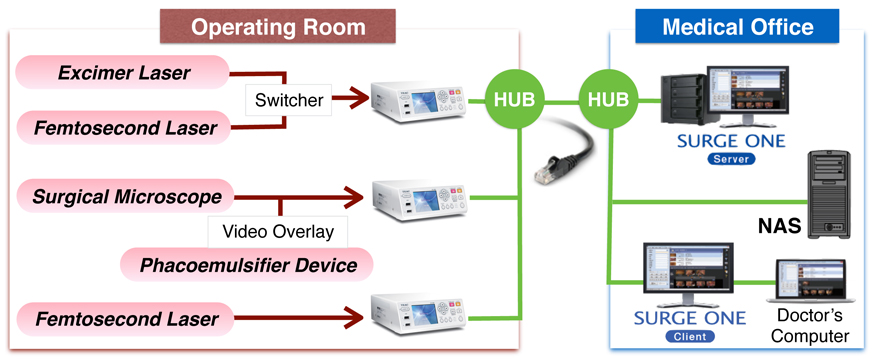
How does SURGE ONE help enhance the workflow?
The way to manage surgical videos has changed drastically, and is now very efficient. In the past, everything was managed manually in an old fashioned way. Now, we enter the patient data into the system, and use this information later to search for a desired portion of the video for any surgery at any time. There is no longer any need to manually check DVD or CD on the shelf. For any cases of concern, we can add comments to the video which can be easily retrieved later, saving a lot of time in searching. The majority of today's imaging devices output HD Images, so we are very happy that we can capture, record and then playback crystal clear images just as they are. Using SURGE ONE also means no more increase in the number of discs for archiving, helping us save space in the medical office and more importably time and resource for searching and organizing. With SURGE ONE, as soon as video recording is finished, the videos and data are automatically transferred to the server in the medical office. Furthermore, we can use the editing functions of SURGE ONE and easily extract video and short clips and share with other doctors or for presentation at conferences.
